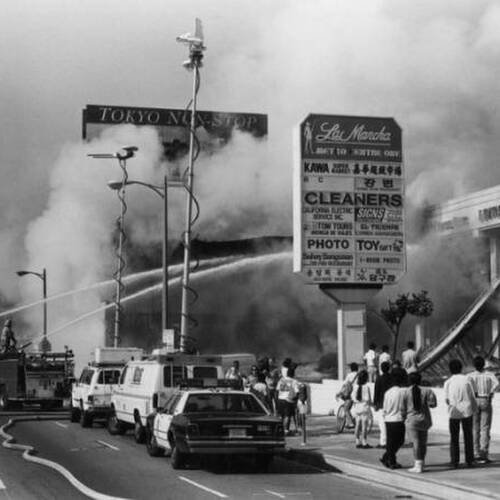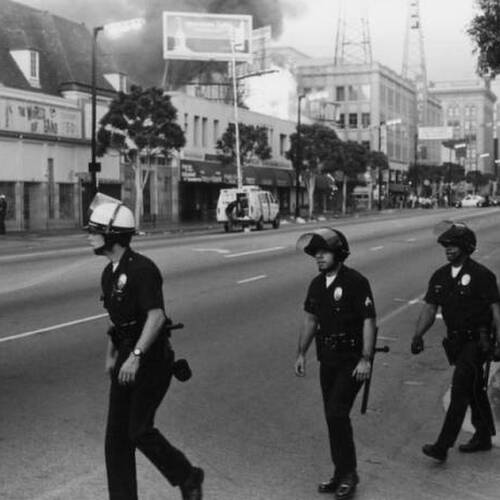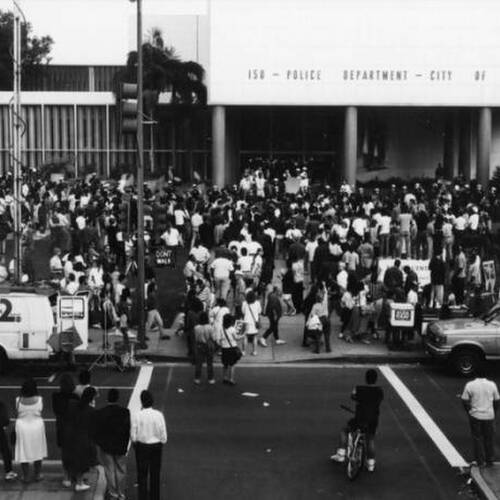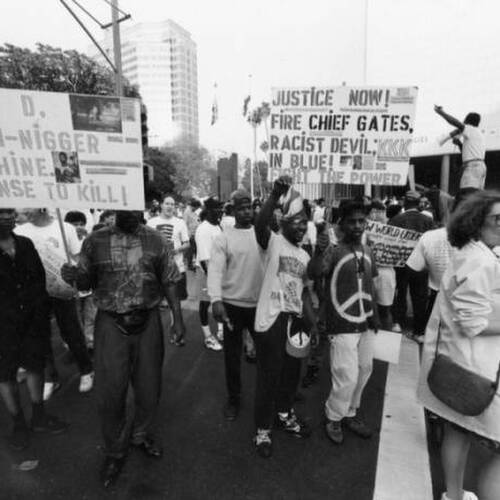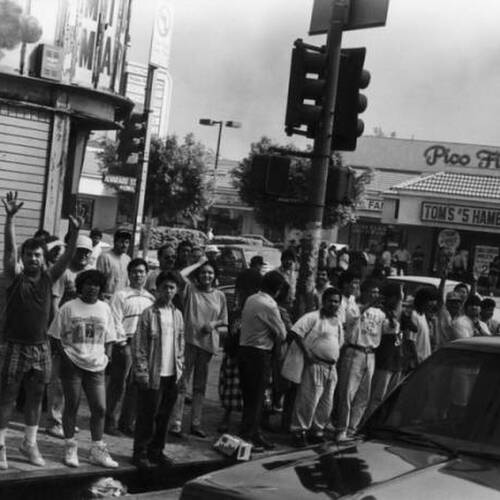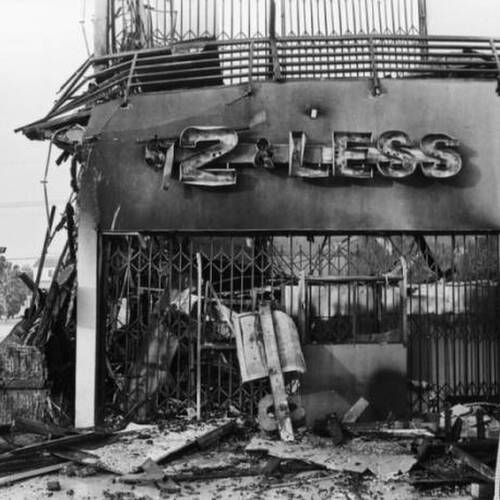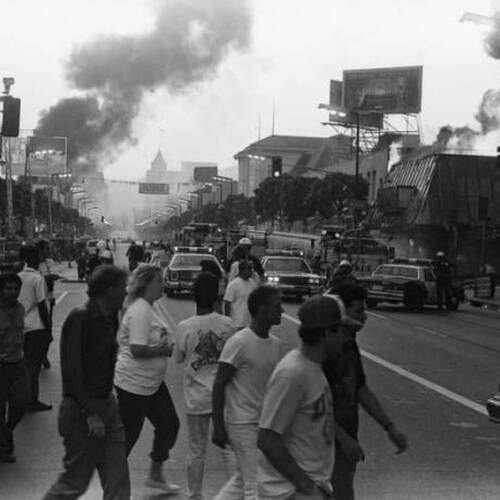White Supremacy & Model Minority Myth
Korean merchants were put in a difficult position as they were not part of the dominant or subordinate group in the economy. They are situated in the middle with not many allies. Many Koreans experienced this isolating positionality when their local community government failed to protect them. The Korean community was forced to protect their stores.
The poor race relations between Koreans and Blacks stemmed from the segregated military occupation, racist media coverage, and misrepresentation of African Americans. The murder of Harlins and the ruling of King were two separate incidents that were used as the catalyst for this movement of mass violence and aggression.
The riots reinforced existing racism and further divided the two communities. African Americans felt that their concerns and grievances were not being addressed, while Korean Americans felt more isolated and vulnerable in their communities.
The existing stereotypes of African Americans and Korean Americans were only strengthened during the riots. African Americans were characterized as lethargic, poor, and aggressive. Asian Americans were portrayed as hardworking, high-achieving, and law-abiding citizens. These traits work together to force Asian Americans to embody the role of a “model minority.”
The Black community argued that the Korean community was granted benefits and received loans because of their race. However, in reality, the majority of money loan requests were actually rejected because these businesses were located in poor neighborhoods. Korean immigrants who were able to open small stores and businesses either immigrated with money or borrowed it.
The majority of Korean immigrants were college graduates, they were forced to open these businesses as they could not find jobs because of discrimination and anti-foreign sentiments. These jobs were not prestigious occupations and were viewed as “occupational downgrading and self-exploitations” within the Korean community. They did not see themselves as racially superior because of their occupation.
These misunderstandings led to judgements about the Korean immigrants and they were seen as antagonists of the Black community. Both groups were not conscious of white supremacy and how systemic racism was harming both of their communities.
The racist stereotypes that Korean immigrants adopted from the United States military are a result of white supremacy. During the 1950s onward, the Black community was represented in a very negative light which reinforced racist stereotypes and stigmas.
Korean immigrants and Korean Americans have very different interpretations of white and Black relations. The prevalence of white supremacy in American society dominated the discourse which led Korean immigrants and Korean Americans to believe in anti-Black sentiment, allowing them acceptance in white society and in American society as a result.
While there are reasons for the Korean community to harbor negative sentiments toward the Black community, the systemic issues of white supremacy cannot be undervalued in the discussion of the proliferation of anti-Blackness in America, specifically the Asian American communities.
This video discusses the social attitudes and frustrations during the riots. We can see how deeply the violence and unjust rulings hurt everyone on a very personal level. It also highlights the people involved in the riots and how people of all ages are participating in them.
"We're hurting ourselves."
"There's a lot of people out there talking about getting back at the white man. They have ten, fifteen, twenty years' worth of frustration built up inside of them, but they don't realize that when they go and they torch that store in the corner, they're not torching the system or the white man. They're burning up somebody's dream. They're destroying somebody's livelihood."
These two quotes during the interview show how the immediate community in Koreatown and Los Angeles are somewhat blind to the larger issue at hand. There are deeper systemic issues that are greatly hindering their ability for justice but are not as visible because of the high tensions within the community. While the people are actively trying to combat the larger enemy, they don't see the manifestation of their actions are negatively affecting their own community.
